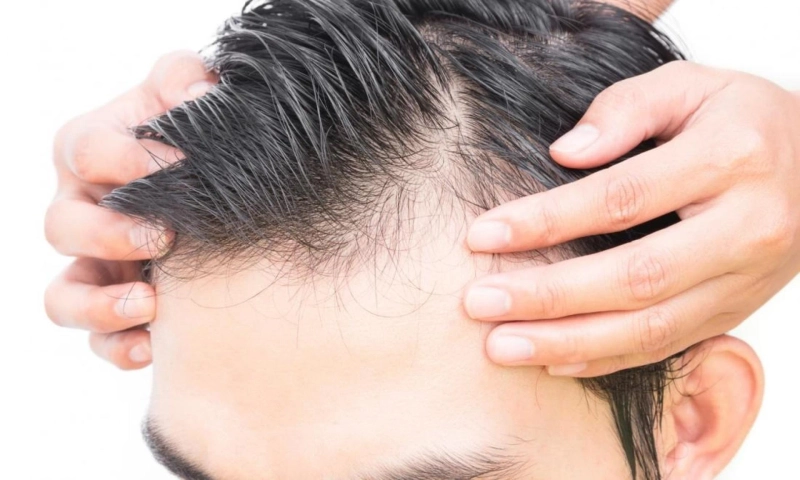Previously, people used to dismiss hair loss as a sign of getting older due to their lack of knowledge about the condition and limited alternatives. However, in today's society, individuals are well-informed about this problem and highly driven to discover a remedy. The advent of digitalization has provided a vast amount of information, enlightening people about numerous scientific and technological advancements. Similarly, as awareness increases, so does the curiosity surrounding hair transplant surgeries.
Why hair loss occurs?
There are numerous factors that contribute to hair loss, but genetics is the primary cause. Androgenic alopecia, commonly referred to as male pattern baldness, is an inherited condition that can be passed down from either the father's or mother's side of the family. In addition to genetics, the use of hot tools such as hair straighteners and curlers, hot baths, stress, chemical straightening, tight braiding, hormonal changes after menopause, medication such as anti-depressants, anti-anxiety, and anti-psychotics, lack of sleep, and a poor diet are all additional factors that can contribute to hair loss.
Treatments options to deal with pattern baldness include
The efficacy of cosmetic products like hair oils, shampoo, etc., or alternative treatments such as Ayurveda in treating hair loss lacks scientific evidence.Wigs, hair patches, and prosthetic hair are commonly utilized to conceal bald spots or scalp, but they require high maintenance and may not look natural. Additionally, they can be easily noticeable.Medications for hair loss typically include Minoxidil, a topical treatment available in liquid, foam, and shampoo forms, and Finasteride, a prescription pill for men. However, these solutions are temporary as hair loss resumes once the medication is discontinued.Hair transplantation is a surgical procedure that involves extracting hair roots or follicles that are not sensitive to DHT, ensuring permanent hair growth, and transplanting them to the bald area. The success of the surgery depends on selecting roots based on permanent hair roots and reasonable hair density. The back and sides of the head are usually chosen as donor areas, but body hair can also be used if necessary. The key factors that determine the success of a hair transplant are the design of the hairline and the damage rate of hair follicles during the procedure.There are primarily two methods utilized for extracting hair follicles from the donor area:
FUT (Follicular unit transplantation or strip technique): The FUT hair transplant technique involves harvesting a narrow strip of scalp tissue that contains a sufficient number of hair follicles and surrounding tissue. This strip is then carefully dissected under high precision microscopes to isolate individual grafts.FUE (Follicular unit extraction): The FUE hair transplant technique involves extracting individual hair follicles, rather than a strip of tissue, from the safe donor area. This is achieved using a punch-like device, and the extracted follicles are subsequently placed at the desired bald site.Is it worthy to get a hair transplant?
It is essential to assess the feasibility of a hair transplant before proceeding with the procedure. This evaluation occurs during the initial consultation, where a comprehensive review of your medical history and scalp is conducted to determine if you are a suitable candidate. The main goal of these assessments is to pinpoint the cause of hair loss and assess the thickness of your hair, which is crucial in determining your eligibility. Although there is no strict age limit for hair transplant procedures, it is generally recommended to avoid them for individuals under 21 and over 70 years old. No prescriptions are needed after the procedure, as the transplanted hair grows naturally like regular hair. Pain medication may be required in the days following the treatment, depending on individual circumstances.
Is it best for me to get a hair transplant?
Before arranging a hair transplant, it is essential to assess if the procedure is suitable for your specific case. This evaluation is typically conducted in the initial consultation. After carefully examining the medical background and scalp condition, the eligibility for the surgery is confirmed. These steps are crucial to identify the cause of hair loss and evaluate the hair density, which ultimately determines your suitability. While age is not a limiting factor for hair transplant procedures, individuals under 21 and over 70 are usually advised against undergoing such treatments.
The results of a hair transplant can be observed at different stages. Initially, within a few days, you may experience the shedding of the transplanted hairs, which is a normal part of the growth process. Subsequently, after approximately six months, these newly implanted hair follicles start to emerge as tiny extensions on the scalp. Finally, after a year has passed since the hair transplant procedure, you can expect to witness the complete and final outcomes.
After the procedure, there are no prescriptions that need to be filled. The transplanted hairs will grow naturally, similar to normal hairs, as they were taken from your own body. Pain medication may or may not be necessary in the first few days’ post-treatment. Hair transplant surgery is considered the most effective treatment for hair loss, ensuring a permanent solution to baldness. Medispa clinics for hair transplant in Jaipur and Delhi offer the best hair transplant services, with Dr. Suneet Soni renowned for delivering exceptional results. The hair transplant cost in Jaipur has decreased, providing affordable options that meet international standards.


